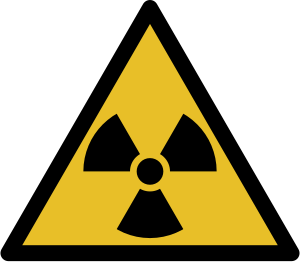Be prepared
 Image via WikipediaCover Up Of Fukushima Chain Reaction Underway
Image via WikipediaCover Up Of Fukushima Chain Reaction Underway
All the nuclear reactors at the earthquake stricken Fukushima nuclear plant are under threat of melting down and exploding in a chain reaction that will signify the world’s worst ever nuclear disaster and send clouds of radioactive particles hurtling towards the United States – that’s the scale of the crisis facing Japan as officials admit for the first time that three nuclear reactors are already in a meltdown.
While the mainstream media continues to argue over the definition of a “meltdown” while unquestionably regurgitating the dubious claim of Japanese officials that the two massive explosions witnessed at the plant were caused by pressurized hydrogen, radioactive isotopes cesium-137 and iodine-121 have been detected by helicopters flying 160km (100 miles) away from the nuclear plant, which can only mean one thing, according to the Seattle Times: “One or more of the reactor cores is badly damaged and at least partially melted down.”
After claiming for three days that the explosions did not damage reactor cores and downplaying the severity of the situation, Japanese officials have now been forced to admit the obvious, that nuclear fuel rods in three reactors are melting. Given the sequence of events, it is entirely probable that all six reactor sites will now go into total meltdown and start spewing radioactive particles into the atmosphere that threaten not only Japanese citizens but also those living on the west coast of the United States....
Japanese engineer Masashi Goto, who helped design the containment vessel for Fukushima’s reactor core, says the design was not enough to withstand earthquakes or tsunamis and the plant’s builders, Toshiba, knew this.
Mr Goto says his greatest fear is that blasts at number 3 and number 1 reactors may have damaged the steel casing of the containment vessel designed to stop radioactive material escaping into the atmosphere.
He says that as the reactor uses mox (mixed oxide) fuel, the melting point is lower than that of conventional fuel. Should a meltdown and an explosion occur, he says, p lutonium could be spread over an area up to twice as far as estimated for a conventional nuclear fuel explosion. The next 24 hours are critical, he says.
Goto warns that Japanese authorities have suppressed the true severity of the crisis and that there is “a severe risk of an explosion, with radioactive material being strewn over a very wide area – beyond the 20km evacuation zone set up by the authorities,” adding that the worst case scenario would manifest itself as “many Chernobyls,” and that the effect would be, “Like a volcano spreading radioactive material.”
Nuclear expert Joe Cirincione warns that radiation from Japan’s multiple potential nuclear meltdowns could spread to the US west coast and that the threat represents an “unprecedented crisis.”
Yoichi Shimatsu, former editor of the Japan Times, states that after a high-level government meeting, “Japanese agencies are no longer releasing independent reports without prior approval from the top,” and that censorship of what is really occurring at the plant is being overseen under the Article 15 Emergency Law.
Be prepared. One step is
Potassium Iodide (SSKI):
SSKI may be used in radioiodine-contamination emergencies (i.e., nuclear accidents) to "block" the thyroid's uptake of radioiodine (this is not the same as blocking the thyroid's release of thyroid hormone).
Potassium iodide was approved in 1982 by the US FDA to protect the thyroid glands from radioactive iodine from accidents or fission emergencies. In the event of an accident or attack at a nuclear power plant, or fallout from a nuclear bomb, volatile fission product radionuclides may be released, of which 131I is one of the most common by-products and a particularly dangerous one due to thyroid gland concentration of it, which may lead to thyroid cancer. By saturating the body with a source of stable iodide prior to exposure, inhaled or ingested 131I tends to be excreted.
 Image via WikipediaCover Up Of Fukushima Chain Reaction Underway
Image via WikipediaCover Up Of Fukushima Chain Reaction Underway
No comments:
Post a Comment